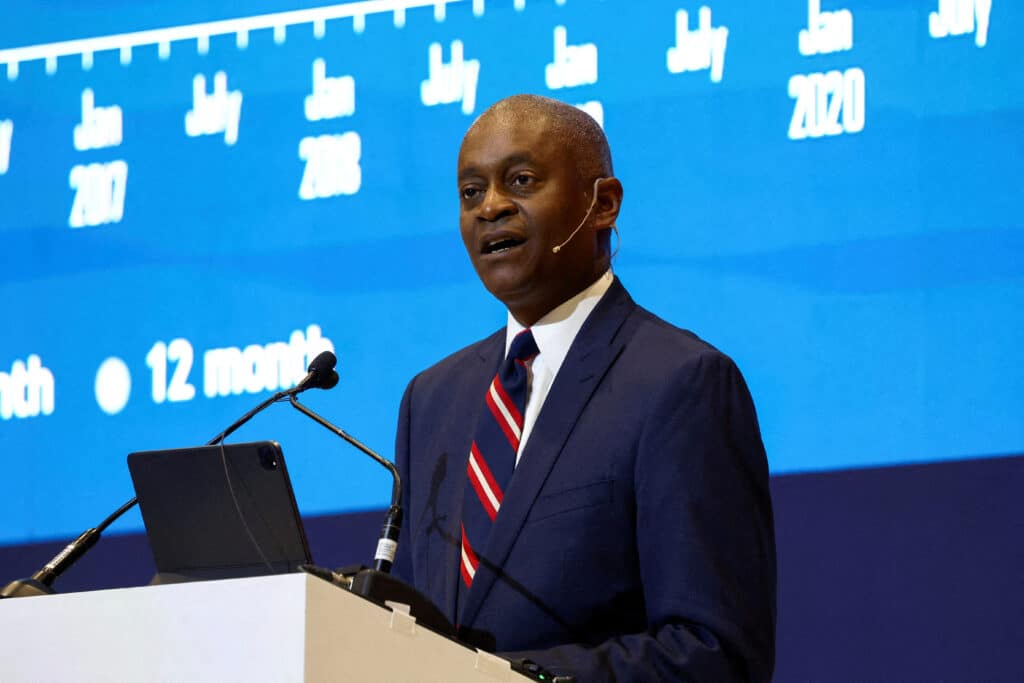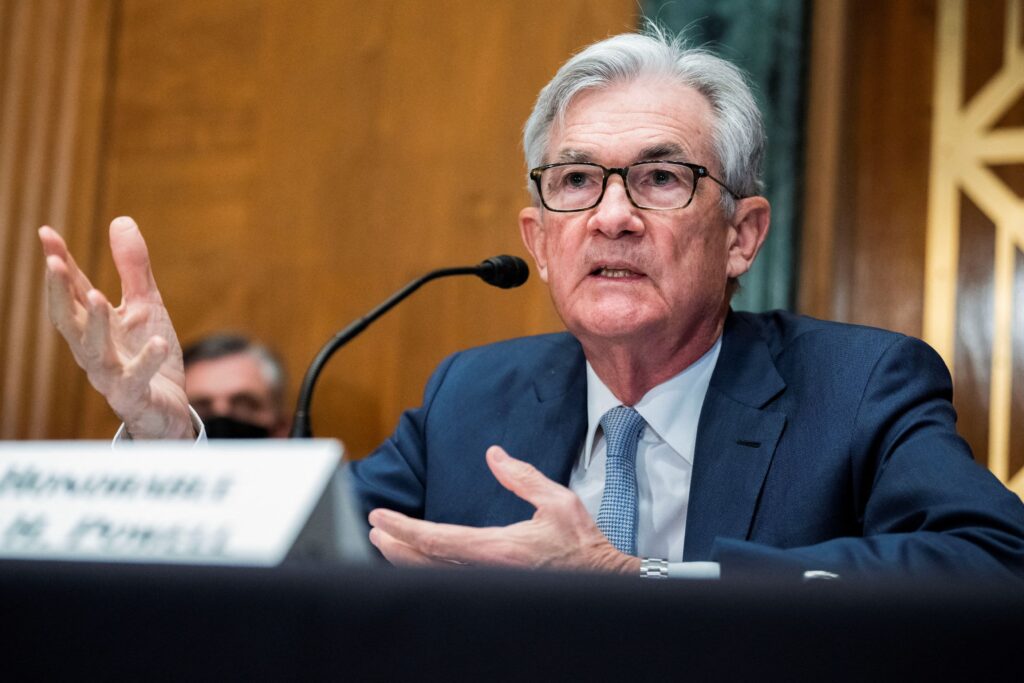Current Climate: US Economy and Fed Speakers Outlook
Federal Reserve officials have recently conveyed a cautious stance regarding the possibility of swift interest rate cuts, reflecting their assessment of the current state of the US economy. Governor Michelle Bowman, among others, emphasised the importance of maintaining the policy rate steady, citing potential risks to inflation that could hinder progress or lead to a resurgence in price pressures.
Bowman reiterated her cautious approach towards future policy adjustments, expressing confidence that the current policy stance, with the benchmark interest rate held within the 5.25%-5.50% range, is appropriately calibrated to address inflation pressures. However, she acknowledged the possibility of eventual rate reductions if inflation trends towards the Fed’s 2% target sustainably.
Atlanta Fed President Raphael Bostic echoed similar sentiments, noting that the Fed is not under urgent pressure to cut interest rates given the “prospering” economy and job market. Bostic emphasised the risk that inflation may remain above the central bank’s 2% target or even increase due to “pent-up exuberance.”

While Bostic indicated the likelihood of two quarter-point rate cuts by the end of the year, he also emphasised the importance of observing more progress in inflation before fully committing to rate cuts. He highlighted the Fed’s cautious approach, aiming to prevent economic strength from evolving into excessive inflationary pressures.
The pace of rate cuts, according to Bostic, will depend on various factors, including market dynamics and responses from businesses and households. He emphasised the need for careful monitoring and indicated that rate cuts, likely initiated in the third quarter, may not occur back-to-back, with the timing contingent on economic developments and feedback from stakeholders.
What to Expect from Powell
Federal Reserve Chair Jerome Powell is scheduled to testify before Congress on Wednesday and Thursday, March 6th and 7th, at 4:00 GMT, offering crucial insights into the central bank’s monetary policy outlook. Markets are eagerly anticipating Powell’s testimony, seeking fresh cues on the Fed’s stance. Analysts predict that Powell will maintain a hawkish tilt, echoing Bowman and Bostic’s cautious tone. Powell is expected to emphasise the Fed’s patient approach to rate adjustments, underscoring the robustness of the U.S. economy and the necessity for further evidence before considering rate cuts.

Despite growing pressure for rate reductions from certain quarters, Powell is likely to reiterate the risks associated with premature policy actions and stress the importance of sustained economic stability. His testimony will be closely scrutinised for any indications regarding the Fed’s policy trajectory amid evolving economic conditions and inflation dynamics.
Analysts believe that while Powell may uphold a cautious stance during his testimony, the Fed could potentially gain enough conviction by June to initiate rate cuts. However, for now, Powell is anticipated to uphold a vigilant approach, emphasising the need for prudence and data-driven decision-making in navigating the current economic landscape.
What it Means for Fed’s Powell to Testify Before Congress
Federal Reserve Chair Jerome Powell’s testimony before Congress holds significant implications for the US economy and financial markets. Scheduled for Wednesday and Thursday, 6th-7th March, Powell will address members of both the Senate and the House of Representatives, providing insights into the Fed’s monetary policy stance, economic outlook, and regulatory priorities.
Frequency and Purpose
Powell’s testimony before Congress is a semiannual occurrence, with the Fed Chair typically appearing before lawmakers twice a year. These appearances serve as a key mechanism for congressional oversight of the Federal Reserve and offer policymakers an opportunity to question Powell directly on matters relating to monetary policy, economic conditions, and financial regulation.
Format and Content
The testimony follows a structured format, with Powell delivering prepared remarks followed by a question-and-answer session with members of Congress. The prepared remarks typically outline the Fed’s assessment of the current economic environment, including inflation, employment, and growth prospects. Powell may also discuss the Fed’s policy decisions and the rationale behind them, providing insight into the central bank’s thinking and future course of action.
Importance of Powell’s Testimony
Powell’s testimony holds significant importance for several reasons:
Monetary Policy Guidance: Investors closely analyse Powell’s remarks for clues about the Fed’s future policy direction, including interest rate decisions and asset purchase tapering. Any hints or indications of potential policy shifts can have immediate implications for financial markets, influencing bond yields, stock prices, and exchange rates.
Economic Outlook: Powell’s assessment of the economic outlook provides valuable insights into the Fed’s view of key economic indicators such as inflation, employment, and GDP growth. Changes in the Fed’s outlook can impact market expectations and shape investor sentiment regarding future economic conditions.
Regulatory Priorities: Powell’s testimony also offers an opportunity to address regulatory issues and challenges facing the financial sector. Lawmakers may inquire about the Fed’s efforts to promote financial stability, regulate banks, and address emerging risks in the financial system.
Congressional Oversight: As an independent government agency, the Federal Reserve is subject to congressional oversight. Powell’s testimony allows lawmakers to question the Fed Chair directly on matters of policy, transparency, and accountability, ensuring accountability and transparency in the central bank’s operations.
Powell’s testimony before Congress serves as a crucial forum for communication between the Federal Reserve and policymakers, providing valuable insights into the central bank’s policies, priorities, and outlook for the US economy. Investors, policymakers, and the public alike closely monitor Powell’s remarks for signals about the future direction of monetary policy and the broader economic landscape.